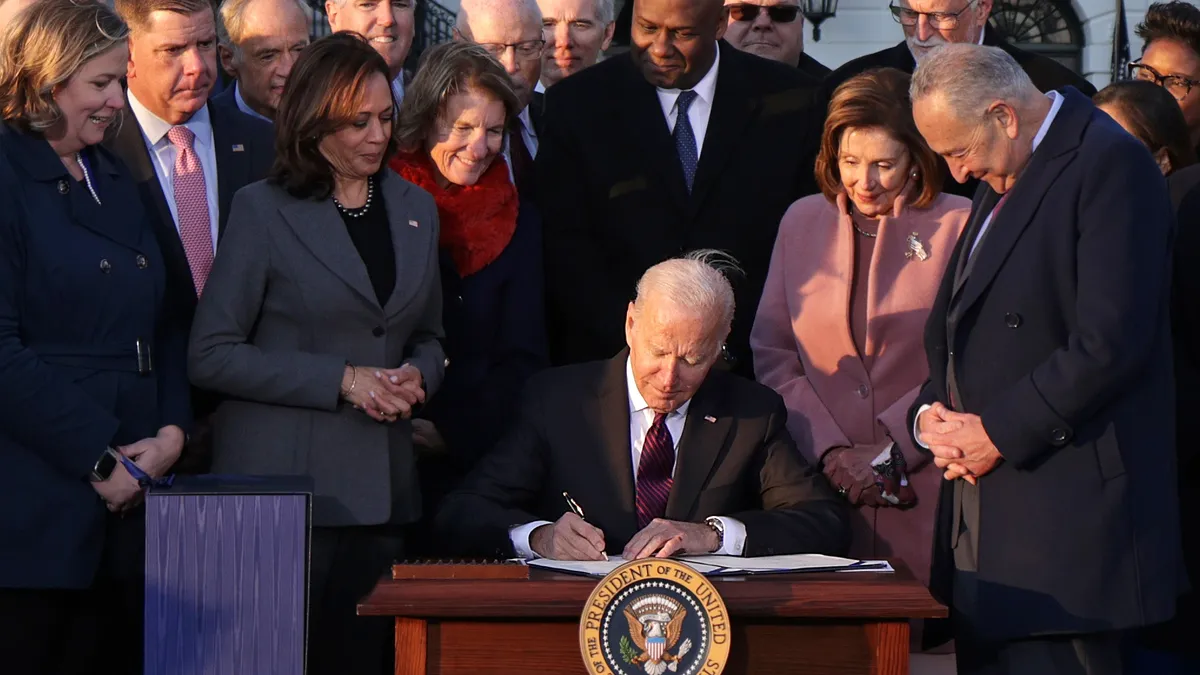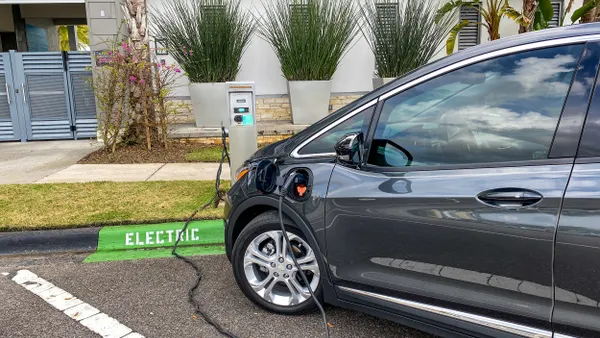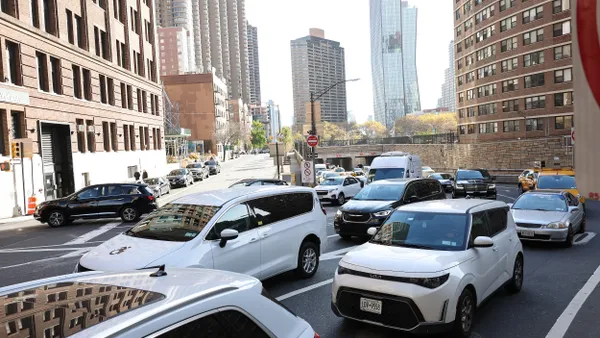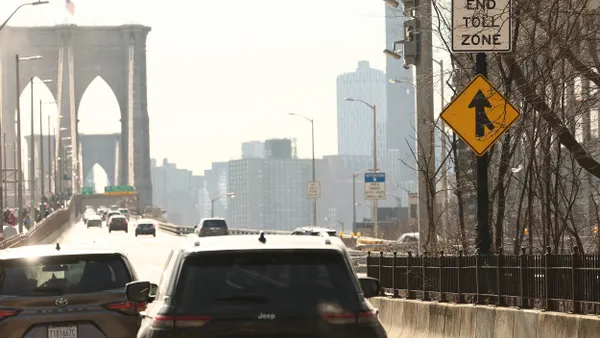Dive Brief:
- U.S. cities, states and the federal government spent a combined $419.8 billion on transportation projects in 2022, according to data released Dec. 31, 2024, from the U.S. Department of Transportation’s Bureau of Transportation Statistics.
- Annual expenditures on transportation by state and local governments grew over 37% in current dollars from 2010 to 2022, while yearly federal expenditures rose nearly 22% in the same timeframe.
- Total government expenditures on highways increased almost 30% over that 13-year period in current dollars. Expenditures on transit grew more than 45% from 2010 to 2021 but leaped a further 16% in 2022 compared with the year prior as the bipartisan infrastructure law took effect.
Dive Insight:
The 2021 infrastructure law dedicated $673.8 billion to transportation, with $379 billion going to highway programs. Public transit funding from the five-year law is designated at $116 billion while passenger and freight rail are set for $102.5 billion. In total, about two-thirds of transportation funds available through the infrastructure law have been committed as of Dec. 15.
About 90% of government spending on transportation occurs at the state and local levels, the BTS said, with federal funds often supplementing state and local investments. According to the Biden administration, more than $568 billion in Infrastructure Investment and Jobs Act funds, going to over 66,000 projects, were announced as of Nov. 15, 2024. In 2022, the federal government transferred over $100 billion to state and local governments, along with Amtrak, through grants and other programs such as the Highway Trust Fund, according to the BTS.
“These investments are creating jobs, benefitting our communities, and ushering in an infrastructure decade that is planting the seeds for a better and more prosperous future,” Biden said in a Nov. 15, 2024, statement.
The data on recent government transportation spending changes when accounting for inflation. When adjusting for inflation since 2017, state and local expenditures declined nearly 8% between 2010 and 2022, while federal spending dropped 4%.
As the administration changes hands on Jan. 20, Republicans will have more influence in transportation policy. U.S. Rep. Sam Graves, R-Mo., chair of the House Transportation and Infrastructure Committee, said in a Dec. 12 statement that the committee “will work with President Trump to advance his infrastructure priorities, developing the next long-term highway bill, and focusing on fixing the real infrastructure that moves people and goods safely and efficiently throughout our country.”












